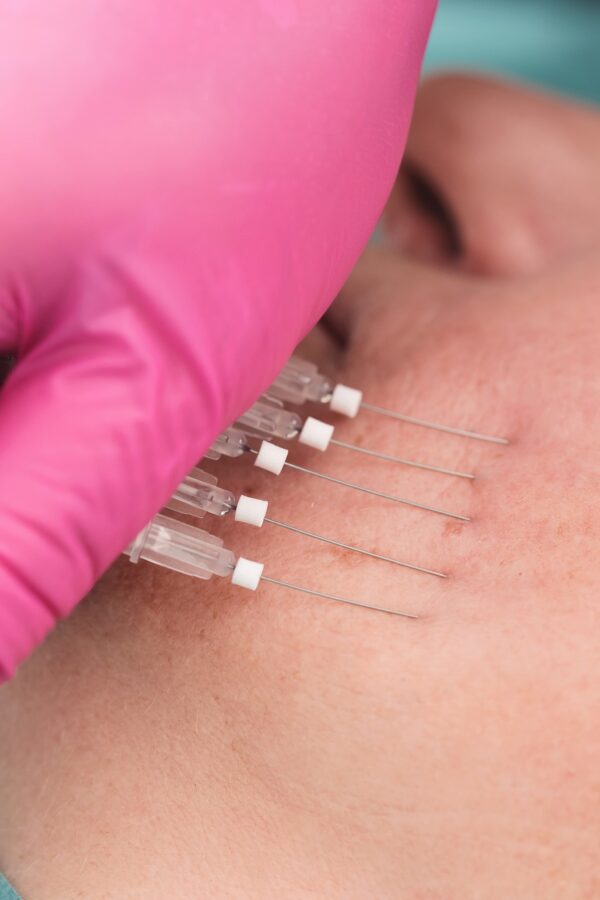
PDO & PLLA Threads
In most cases, threads are inserted with tiny needles or cannulas and are secured in place through only that insertion point That means no incisions are made, no tissue is cut, and no stitches are seen outside of the skin. They are strategically placed to resuspend the tissue or add support to the underlying areas. At the same time, the products are designed to stimulate the body’s healing response. They stimulate new collagen growth, which in turn causes thickening of the tissue and improved tone and texture.
This is a highly customizable procedure. The insertion point, the number of threads used, and the type of threads used depend on your goals. After a thorough consultation, we will decide together what the best plan of action for you might be.
Tip 1: Fillers are best for volume loss or enhancement of features, but threads are best for lift and resuspension. Be sure to choose an injector who can utilize both tools to maximize your results!
Tip 2: Smooth or twisted threads can be a great alternative to filler in certain areas! They can also add definitions to places such as the lip borders.
Results
The results from a structural support procedure are gradual over weeks. The body’s healing and collagen stimulation develop slowly as the threads dissolve. This process can take up to 90 days. The tiny needles used to place the threads cause some swelling as well. It is common to be swollen for the first few days after treatment. This swelling slowly resolves completely in about 1 to 2 weeks.
Side Effects & Recovery
It is important to avoid strenuous exercise, a dramatic turning of the head, and side sleeping during the first week. A tugging sensation or tightness is the most common complaint. Listen to your body during this time. Your body will tell you when you are doing too much!

